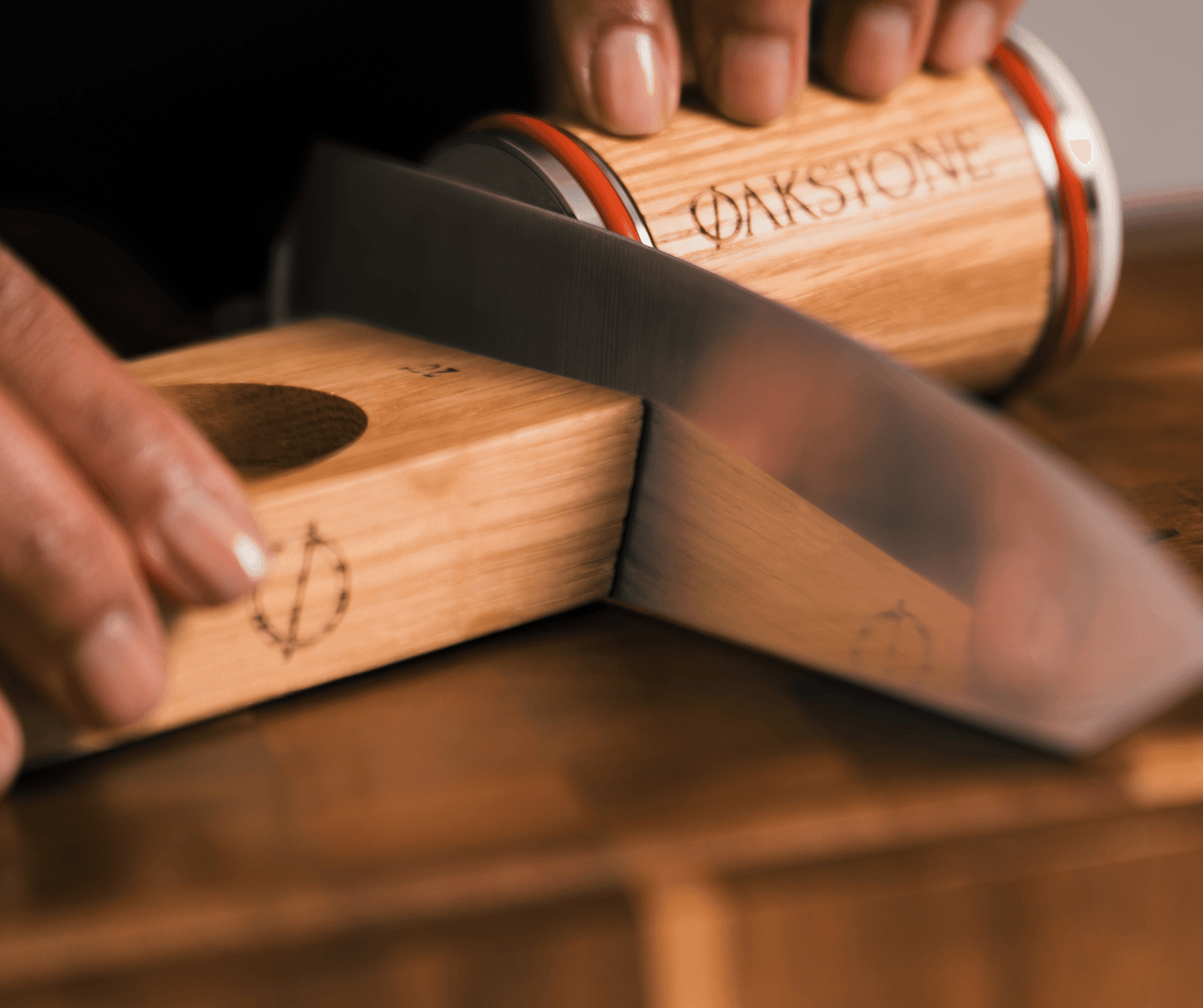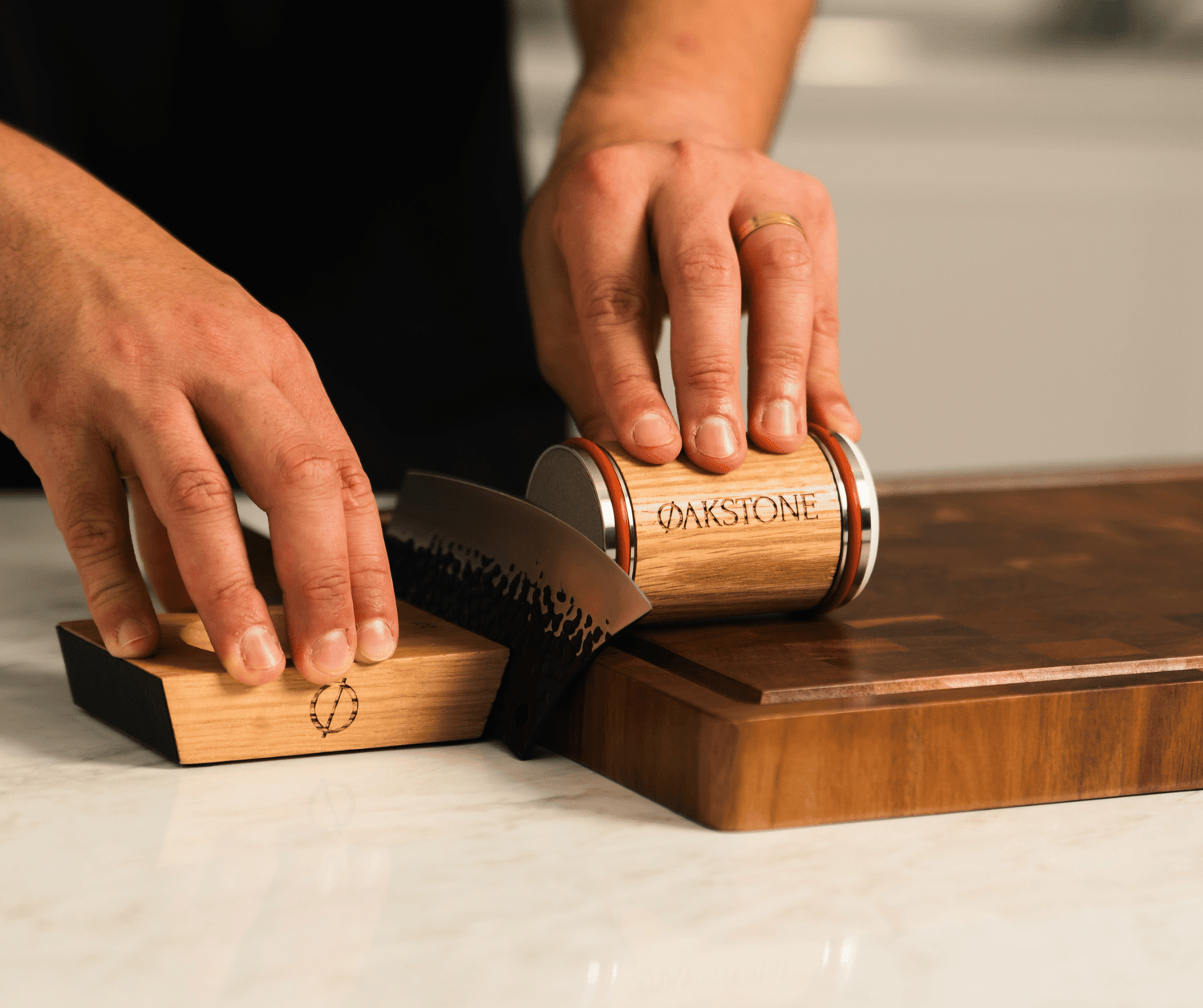Are You Sharpening Your Knives Wrong? A Guide to 15° vs. 20° Angles
You’ve sharpened your favourite kitchen knife, but it still doesn’t seem to slice as effortlessly as you’d like. What are you doing wrong? The secret to a truly exceptional edge isn't just about making the blade sharp; it's about sharpening it to the correct angle.
The angle of your knife's edge is the most critical factor for its performance. Most high-quality Western and Japanese kitchen knives are ground to one of two main angles. Using the wrong one can lead to a blade that dulls quickly or is poorly suited for its task.
Let’s demystify the two angles that every home cook should know:

The 20° Western Edge: Your Kitchen Workhorse
Think of your sturdy German-style chef's knife - the one you use for everything. It most likely has a 20-degree edge angle.
What it is: A wider, more robust angle.
Why it's great: This angle provides excellent durability. It’s strong enough to stand up to heavy-duty chopping, dicing hard vegetables like pumpkin and potatoes, and handling the daily demands of a busy kitchen without chipping easily.
Best for: All-purpose chef's knives, carving knives, and cleavers.

The 15° Japanese Edge: The Razor-Sharp Slicer
Now, think about your finer, lighter Japanese-style knives, like a Santoku or Gyuto. These are typically ground to a more acute 15-degree angle.
What it is: A much finer, narrower angle.
Why it's great: This angle creates an incredibly sharp, almost surgical edge. It is perfect for tasks requiring extreme precision, like finely slicing fish, making paper-thin cuts of vegetables, or mincing herbs without bruising them.
Best for: Japanese knives (Santoku, Nakiri, Gyuto), filleting knives, and any blade you use for delicate, precise work.
The Simple Solution: A Sharpener That Does Both
So how do you get the right angle every time without years of practice? This is where a quality rolling sharpener becomes essential. The Oakstone sharpener was designed with a dual-angle magnetic base, offering both 15° and 20° options. This takes all the guesswork out of the process.
Many sharpeners only offer a single, generic angle, which means you might be sharpening your delicate Japanese knife with an angle that’s too wide, or your robust chef’s knife with an angle that’s too fine and will dull quickly. Our system gives you the confidence to match the perfect edge to the right knife, every time.
As a general rule, German and European knives (like Wüsthof or Zwilling) typically use a 20° angle, while Japanese knives (like Shun or Global) use a 15° angle. If you're unsure, check the manufacturer's website.
Yes, you can. It will take a bit more time during the first sharpening session as you'll need to remove more metal to establish the new, finer angle. Once it's set, future sharpening will be much faster.
A consistent angle ensures that you're creating a single, clean apex along the entire length of the blade. An inconsistent, wobbly angle results in a rounded, weak edge that will never feel truly sharp.
If you sharpen a 15° knife at 20°, it will still be sharp, but you'll lose that razor-fine precision. If you sharpen a 20° knife at 15°, you'll get a very sharp but much less durable edge that is likely to chip or roll during heavy use.
Ready to Earn Your Edge?
Get Sharpening Secrets & Members-Only Perks
The insights you need to make smarter kitchen decisions.
Ready to Earn Your Edge?
Get Sharpening Secrets & Members-Only Perks





